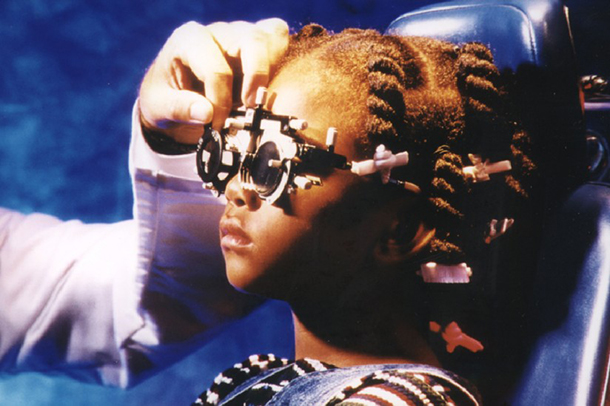The largest study of childhood eye diseases ever undertaken in the U.S. confirms that the incidence of childhood myopia among American children has more than doubled over the last 50 years. The findings echo a troubling trend among adults and children in Asia, where 90 percent or more of the population have been diagnosed with myopia, up from 10 to 20 percent 60 years ago.
The Multi-Ethnic Pediatric Eye Disease Study (MEPEDS), conducted by researchers and clinicians from the USC Eye Institute at Keck Medicine of USC in collaboration with the National Institutes of Health (NIH), adds to a growing body of research into the incidence and potential causes of myopia, or near-sightedness, in children and adults.
The possible culprit? Too much “screen time” and not enough sunlight, according to Rohit Varma, MD, MPH and director of the USC Eye Institute.
“While research shows there is a genetic component, the rapid proliferation of myopia in the matter of a few decades among Asians suggests that close-up work and use of mobile devices and screens on a daily basis, combined with a lack of proper lighting or sunlight, may be the real culprit behind these dramatic increases,” Varma said. “More research is needed to uncover how these environmental or behavioral factors may affect the development or progression of eye disease.”
Myopia is a condition where objects up close appear clearly, while objects far away may appear blurry. With myopia, light focuses in front of the retina (the light-sensitive tissue at the back of the eye) rather than on the retina. There currently is no cure, although its progression can be slowed.
The USC study found that the incidence of childhood myopia in the U.S. is greatest in African-American children, followed by Asian-American children, Hispanic/Latino and non-Hispanic white children. Future research may include re-examining the MEPEDS cohort to evaluate how widespread use of “screens” and other environmental or behavioral factors may be affecting the progression of childhood myopia and other eye diseases over time.
From 2003 through 2011, MEPEDS provided free eye exams at USC Eye Institute clinics to more than 9,000 Los Angeles-area children ages 6 months through 6 years.
“In addition to being the largest pediatric eye study ever undertaken, it is the first of its kind to examine children as young as 6 months old,” Varma said. “Typically, children do not undergo vision testing until they reach school age. By including younger children, we have the opportunity to identify eye diseases and their causes at the formative stages.”
USC Eye Institute researchers and clinicians collected basic health information during a home visit with the child and parents, followed by a detailed eye examination under dilation that collected more than 5,000 eye measurements for each child. To date, data from the USC study has generated more than 20 academic papers on the prevalence of childhood eye diseases, including myopia, hyperopia (far-sightedness), amblyopia (so-called “lazy eye”) and strabismus (abnormal alignment of the eyes).
The USC Eye Institute, part of the Keck Medicine of USC university-based medical enterprise, has been a leader in scientific research and innovative clinical treatments for 40 years. Among the top three funded academic-based medical centers by the National Eye Institute (NEI) research grants and ranked in the Top 10 ophthalmology departments in U.S. News & World Report’s annual “Best Hospitals” issue for the last 20 years, the USC Eye Institute is headquartered in Los Angeles with clinics in Arcadia, Beverly Hills, downtown Los Angeles and Pasadena.
Patients from across the country come to see the USC Eye Institute experts who treat a vast array of eye diseases across the life spectrum from infants to aging seniors. The USC Eye Institute is known for its scientific research and clinical innovation including: creation of the Argus implant for Retinitis pigmentosa patients (known as the “bionic eye”); stem cell research for AMD patients; discovery of the gene that is the cause of the most common eye cancer in children; treatment for eye infections for AIDS patients; inventors of the most widely used glaucoma implant in the world; pioneers of a device for long-term intraocular drug delivery; and the first to use telesurgery to train eye doctors in developing countries. For more information visit: eye.keckmedicine.org.
— Meg Aldrich


